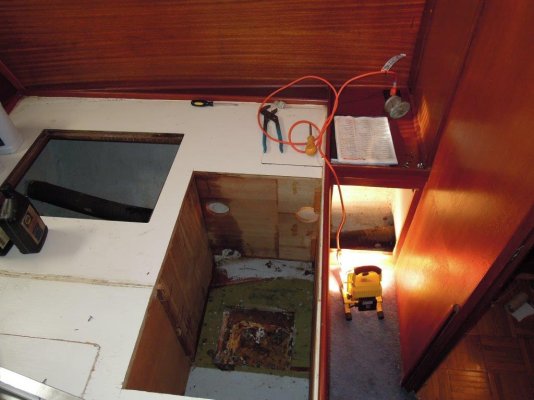On The Rocks
Senior Member
Does anyone know how the exhaust was originally routed on the 36? Did Gulfstar use waterlift mufflers? In particular I'm interested in knowing how the port exhaust was run.
My 4-154s have a 2" diameter elbow with 4" diameter hose connected to them and no waterlift. On the port side the hose runs under the aft head on it's way to the transom creating a low spot under the head where (too much) water collects after the engine shuts down. The hose is crushed in some areas so I want to re-do it, probably with 2". The exhaust is barely at the waterline so getting a downhill run especially through the aft head appears to be difficult if not impossible without waterlifts but I can't figure out where to mount them.
Thought it would be nice to start with the original design but can't find info on that.
My 4-154s have a 2" diameter elbow with 4" diameter hose connected to them and no waterlift. On the port side the hose runs under the aft head on it's way to the transom creating a low spot under the head where (too much) water collects after the engine shuts down. The hose is crushed in some areas so I want to re-do it, probably with 2". The exhaust is barely at the waterline so getting a downhill run especially through the aft head appears to be difficult if not impossible without waterlifts but I can't figure out where to mount them.
Thought it would be nice to start with the original design but can't find info on that.

